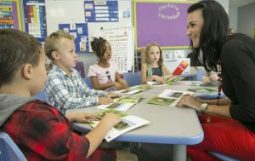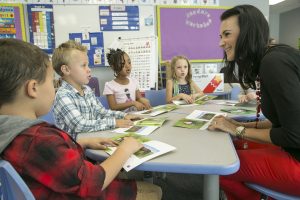The Importance of Finding a Place for Guided Reading in a Balanced Literacy Classroom Guided Reading and balanced literacy are big ideas in literacy instruction today. The function of different approaches in a balanced curriculum offers teachers opportunities to illustrate literacy for learners along a continuum of a gradual release of responsibility. Reading to, with, and by children and teachers gives comparative amounts of support and responsibility throughout the instructional day, and over time, as students grow as readers and writers (Margaret Mooney, 1990).
What Is Guided Reading?
Guided Reading is a crucial component of this balanced literacy approach, yet, is often dismissed as different types of small groupings come into vogue or are crowded out as an instructional day becomes filled with other activities. The role of guided reading in balanced literacy is to provide teachers with opportunities to coach students using a teacher-selected text, chosen because it offers opportunities for learning exactly what these students need to learn at this time in order to read increasingly complex texts with confidence and understanding.
Some instructional models abandon small group practices entirely and have students work independently without a supported small group practice; others call their small groups “guided reading groups” yet have teachers doing the bulk of the work. The inclusion of Guided Reading in balanced literacy is quite clearly needed as teachers support children by forming flexible groups and select appropriate texts so children can apply what has been taught and demonstrated during reading aloud and shared reading time. However, the students read and process the text under the watchful eye of the teacher; the teacher provides support as needed by helping students understand how they used strategies to make meaning.
Through Guided Reading, a student works in a group setting, listening to other students as they problem-solve and discuss how they applied strategies, under the observant eye of a more-expert reader/teacher. All readers are given encouragement and feedback in the moments of processing, thereby ensuring they understand the text as well as understand how they got to that understanding. This focus on applying strategies means the learner grows in the decision-making involved in using strategies.
The role of Guided Reading in balanced literacy cannot be overstated in its importance in a learner’s reading life.
What is the role of Guided Reading in a balanced literacy curriculum, and why might it be such an important player? Debra Crouch.


